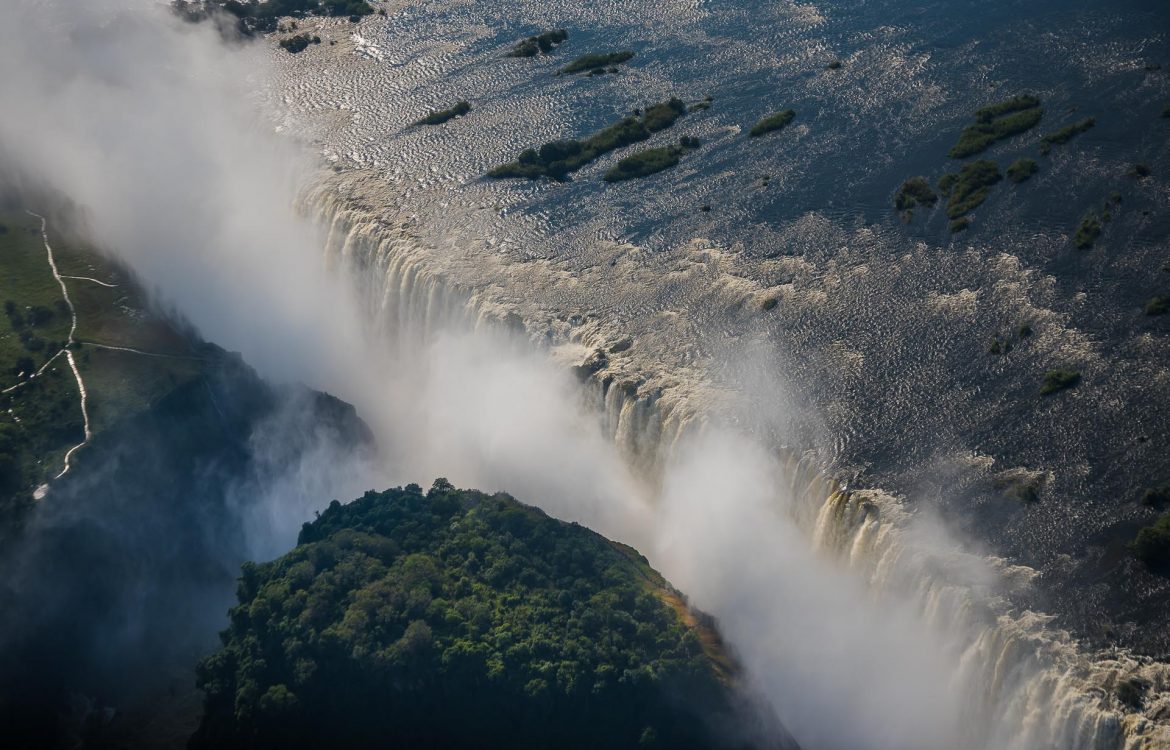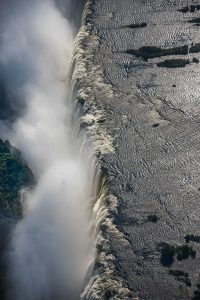
The Little Queen’s Big African Falls
Here’s a conundrum for those who like their history with a dollop of revisionism. While traveling in Africa recently, I visited Victoria Falls and the two countries that border them, Zambia and Zimbabwe. As I viewed the falls from both countries, it was odd to know they were named during the apex of British colonialism in 19th century for a monarch who never actually saw them.
That monarch was Queen Victoria, the ‘Little Queen’ who reigned over Britain during most of 19th century. Draw a line connecting all the places named for her and you’ll understand the phrase, ‘the sun never sets on the British Empire’; there’s the city of Victoria in British Columbia, Canada, Victoria state in Australia, Lake Victoria in Tanzania and Uganda, Victoria Peak in Hong Kong, and, maybe the most dramatic of all, Victoria Falls in Africa.
Now, at the same time, remember that these falls were spilling into the Zambezi Gorge long before the first Union Jack was ever planted in Africa and they already had a name: ‘Mosi-oa-Tunya, the Smoke that Thunders’. A far more evocative one at that, I’d say, if not a bit daunting for the easily tangled western tongue.
It was David Livingstone—yes, that David Livingstone—who became the first European to gaze upon the falls in 1855. Doing so, he immediately named them for his sovereign, Victoria. And while it may trouble our 21st century sensibilities that he never thought to ask any of the locals if the falls had an African name, remember, it was the 19th century, an age perhaps best summarized with the title of Rudyard Kipling’s poem, ‘The White Man’s Burden’.
With this, the whole thing comes into focus: from a more enlightened perch here in the 21st century, how are we to reconcile the naming of these African waterfalls, widely considered the most magnificent on earth, for a British monarch from the colonial era?
This puts the whole business in some thorny terrain that’s mostly academic as no one is agitating for a change. Still, I couldn’t help grinding on it all as I spent a couple days wandering around the falls. The revisionist smack-downs we’ve had in the US over similar landmarks came to mind. Remember Mt. McKinley in Alaska, officially changed to the more culturally respectful (…and better sounding) Koyukan name, Denali, already in common use for years?
When it came to the falls, wasn’t it worth considering the entirety of the British colonial legacy? For this, it helped me to employ a bit of detached comic irony. And to add some meta irony, by invoking the Brits themselves in the form of Monty Python and a scene from a favorite film of mine, ‘Life of Brian.’
Here’s the setup: In ancient Jerusalem, John Cleese as a Judean elder asks his fellow elders, ‘What have the Romans ever done for us?’ in hopes of rousing greater resentment toward the Roman occupation of Judea. His buddies think for a moment then begin to list things the Romans have actually provided, like sanitation, roads, aqueducts, wine, steady food supply, etc.
It’s a brilliant, pointed piece of satire that also happens to provide a succinct little history lesson—Empires have come and gone throughout the course of human history and their cultural impact on formerly occupied lands can’t be painted in a single hue. Whether it’s the Romans, the Ottomans, the Habsburgs or the British, empires usually brought their culture along with their brutality and oppression—enjoy the Pax Romana but stay out of politics.

Bridge over Zambezi Gorge
I recently spent some time in Dalmatia, the coastal region of Croatia that was once a significant province in the Roman Empire. In the city of Split, I visited the retirement palace of Roman emperor Diocletian. Built in the 4th century, it still looks pretty good 1700 years later and has become the gleaming marble heart of the city. Over the centuries, people have lived and started businesses within these ancient palace grounds, today a UNESCO World Heritage Site and Croatia’s biggest tourist attraction.
In Africa, high above the second gorge of the Zambezi River just after Victoria Falls, is the steel bridge built by the British in 1904 and still in use today. Impressive in both aesthetics and durability, this engineering marvel has been a crucial link between Zambia and Zimbabwe for more than a century.
Of course, the bridge also facilitated decades of colonial plunder of the African continent’s mineral wealth. There’s no getting around that. And yet, is it useful to keep the past in the rear-view mirror while trying move forward? The name issue is something only Africans can resolve, specifically the nations of Zambia and Zimbabwe, and neither seem in any rush to wrangle with it. They have plenty of other things on their plates.



